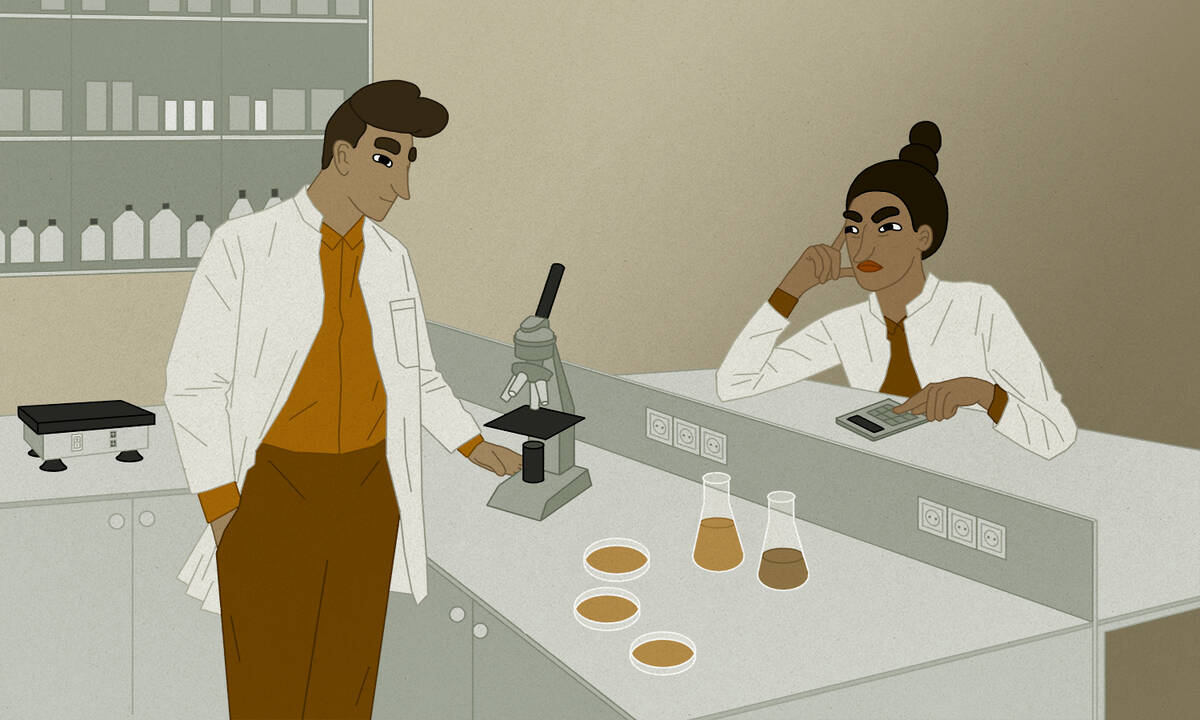Featured Faculty
Gordon and Llura Gund Family Professor of Entrepreneurship; Professor of Strategy; Co-Director of the Ryan Institute on Complexity; Professor of Economics (Courtesy)

Lisa Röper
In 1940, as America warily eyed the war raging across the ocean, a scientist named Vannevar Bush approached President Franklin Roosevelt with an idea. The government, Bush explained, should marshal the country’s scientists to collectively—and quickly—work on new technologies to bolster our national defense.
FDR agreed. He immediately established the National Defense Research Committee with Bush as its chairman. The NDRC went on to develop everything from the atomic bomb to sonar to the mass manufacturing of penicillin.
“It was profoundly strong leadership, connecting government, science, and the private sector,” explains Benjamin Jones, a strategy professor at the Kellogg School. “Not only could the NDRC coordinate and fund innovations, but they were able to streamline the bureaucracy.”
Today the country again needs this sort of bold innovation policy in order to fight the coronavirus, Jones explains. Funding and streamlining biomedical innovation will hasten the discovery of a vaccine and treatments for COVID-19. This, in turn, will reduce the scale of human suffering, both in lives lost and economic fallout.
Jones and colleague Pierre Azoulay of MIT make the case for a bold COVID-19 innovation policy in a recent editorial in Science Magazine. Here, Jones lays out three steps the government should take to spur the needed innovations.
The reality of biomedical research and development is that most ideas fail. Which is why, Jones says, federal funds need to be dispersed far and wide.
Yet this is not the norm for public or private funding of innovation.
“People tend to crowd into a narrow set of innovative avenues,” Jones says. “But if we’re playing roulette and we all put our money on the same number, we don’t improve our chances of winning collectively. You’ve got to spread out your bets.”
Imagine if the government spread its bets out on 10,000 independent research and development efforts, Jones and Azoulay write. Even if each has only a 0.1 percent chance of success, the odds of discovering at least five solid advances is 97 percent.
“How do we rethink the ‘smart, go-slow, careful’ systems we have when we have the luxury of time, versus when we’re in an emergency crisis?”
And while the price tag for such an ambitious endeavor may seem high, it is tiny relative to the $18 billion in GDP losses that the country is experiencing each day.
If you invest, say, $15 billion and the vaccine’s arrival is moved up by even just one day, “it would pay for itself,” Jones says. “The returns are really high.”
We also need to expand the definition of what types of research are relevant to fighting COVID-19, Jones says. Biomedicine may not solve all the problems. Perhaps solutions will come from engineering research—better designed test kits or a new material for door handles—or from information technology—perhaps using social media to help with contact tracing.
Yet one challenge here is that, like many of us, a lot of non-biomedical researchers have been shut out of their offices during stay-at-home orders.
Instead, if they are committed to working on some aspect of the COVID-19 crisis, they should be designated as essential workers and allowed back into their labs immediately, Jones says.
“A lot of teams were broken up,” he says. “Shouldn’t they be able to work?”
One reason for the success of the NDRC (which was later folded into the newly formed Office for Scientific Research and Development) was that it had the authority to move quickly and streamline otherwise slow-moving processes.
That needs to happen with the COVID-19 response, as well, Jones says.
He and Azoulay propose a COVID Defense Research Committee that is empowered to coordinate the funding of innovations and scaling of any successful advances, as well as cutting through bureaucracy to speed up funding, testing, and approvals.
“How do we rethink the ‘smart, go-slow, careful’ systems we have when we have the luxury of time, versus when we’re in an emergency crisis?” Jones says.
For academic researchers, Jones and Azoulay suggest that any principal investigator currently in the NIH or NSF systems should be encouraged to apply for a coronavirus research grant. These applications would be minimal on paperwork and fast-tracked for approval, with all relevant projects making the cut. Funding would be allocated within a week.
For the private sector, a program could be created to offer loans for research and development. If that money is spent on COVID-related innovations, the loans would be forgiven, in much the same way that the Paycheck Protection Program has offered small businesses forgivable loans if they spend the bulk of the money on retaining staff.
This would mandate less up-front vetting than generally happens for R&D funding, Jones says. But labs would know that they may be audited later, which would likely keep most people accountable. Plus, it’s better here to err on the side of speed and handle whatever headaches arise from misallocations later, Jones said.
“You want to have a bias to take action,” he says. “Trust them right now. Give them the loan.”